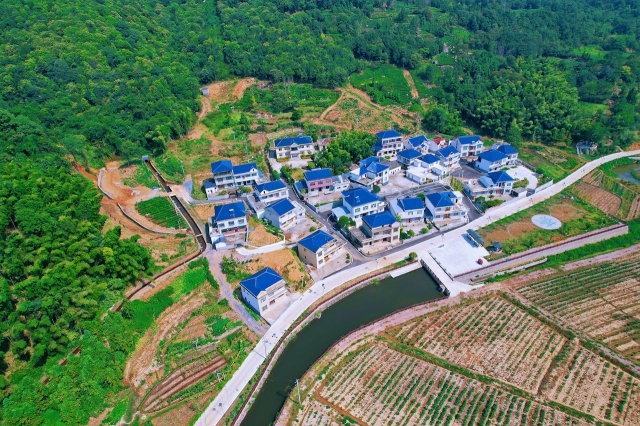As the world increasingly focuses on sustainability and rural development, various programs and initiatives are emerging to support these goals. One of the most effective and impactful is the United States Department of Agriculture (USDA) loan program. Originally established to assist low- and moderate-income individuals and families in acquiring homes in rural areas, USDA loans have evolved to become a vital tool for promoting sustainable rural development.
What Are USDA Loans?
USDA loans are designed to promote homeownership in rural and suburban areas. The USDA Rural Development program offers several types of loans, including:
- Single Family Housing Guaranteed Loan Program: This program provides loan guarantees to approved lenders, allowing them to offer favorable terms to low- and moderate-income borrowers.
- Single Family Housing Direct Home Loans: The USDA issues these loans directly to eligible applicants, and they come with lower interest rates and payment assistance for those who qualify.
- Home Repair and Rehabilitation Loans and Grants: This initiative helps homeowners with limited income to make necessary repairs to their homes, ensuring they remain safe and livable.
- Rural Business Development Grants: Though not loans, these grants support the development of small businesses in rural areas, fostering local economic growth.
USDA loans are attractive options for many rural residents because they are characterized by low interest rates, minimal down payment requirements, and flexible credit standards.
Promoting Homeownership in Rural Areas
One of the primary ways USDA loans support sustainable rural development is by promoting homeownership. Homeownership is a cornerstone of stable communities and is linked to numerous social and economic benefits, including:
- Community stability: Homeownership fosters community ties and reduces turnover, leading to more stable neighborhoods. Homeowners are often more invested in their communities and are more likely to participate in local events and governance.
- Wealth building: Owning a home is one of the most effective ways for individuals and families to build wealth over time. As property values appreciate, homeowners can accumulate equity, providing financial security and opportunities for future investments.
- Local economic growth: When residents own homes, they contribute to the local economy by spending on home improvements, landscaping, and local services. This stimulates demand for goods and services, creating jobs and bolstering the rural economy.
USDA loans make homeownership attainable for many individuals and families who might not otherwise qualify for traditional financing, thereby strengthening rural communities.
Enhancing Sustainability Through Energy Efficiency
Sustainable development goes hand in hand with energy efficiency, and USDA loans encourage homeowners to invest in energy-efficient improvements. Through programs like the USDA Energy Efficiency Improvement Initiative, borrowers can receive financial assistance for upgrades that reduce energy consumption.
Some of these energy-efficient upgrades include:
- Installing solar panels
- Upgrading insulation and windows
- Improving heating and cooling systems.
By incentivizing energy-efficient home improvements, USDA loans help reduce utility costs for homeowners and promote environmental sustainability. Lower energy consumption leads to reduced greenhouse gas emissions, contributing to a healthier planet.
Supporting Rural Businesses
USDA loans are not limited to residential housing; they also support rural businesses through the Rural Business Development Grants and other initiatives. By providing financial assistance to small businesses in rural areas, these programs help stimulate local economies and create jobs.
Economic Diversification
Economic diversification is essential for the sustainability of rural communities. Reliance on a single industry can leave communities vulnerable to economic downturns. USDA loans support small businesses across various sectors, including agriculture, retail, and service industries, promoting a more resilient economic landscape.
- Job creation: When small businesses thrive, they create jobs, reducing unemployment and boosting local economies. More employment opportunities lead to greater community engagement and investment in local resources.
- Community development: Supporting local businesses encourages the growth of community-focused services and amenities, enhancing the quality of life for residents. A diverse local economy fosters innovation and creativity, contributing to the long-term viability of rural areas.
Addressing Housing Quality and Safety
USDA loans also focus on improving the quality of housing in rural areas through home repair and rehabilitation programs. Many rural homes face issues such as outdated plumbing, electrical problems, or structural deficiencies that can pose health and safety risks.
Home Repair and Rehabilitation
The USDA's home repair programs provide funds to help low-income homeowners make necessary repairs. By addressing these critical issues, the USDA ensures residents have access to safe and stable housing.
- Health benefits: Improving housing quality can have direct health benefits. For instance, upgrading heating systems can reduce exposure to harmful pollutants, and repairing roofs can prevent water damage and mold growth.
- Community revitalization: As homes are repaired and renovated, neighborhoods can see revitalization, leading to improved property values and a renewed sense of pride among residents. This can create a positive feedback loop, where improved conditions lead to further investments in the community.
Strengthening Agricultural Communities
Agriculture is a cornerstone of rural economies, and USDA loans recognize the importance of supporting agricultural communities. By providing financing for farmers and ranchers, the USDA helps ensure the sustainability of agricultural practices, which are essential for rural development.
Access to Resources
Through various loan programs, the USDA supports farmers in accessing resources needed for sustainable farming practices. These can include:
- Investments in sustainable practices: Farmers can secure funding to implement environmentally friendly practices, such as crop rotation, organic farming, and soil conservation measures.
- Infrastructure development: Loans can also support the development of necessary infrastructure, including storage facilities and transportation systems, to enhance agricultural productivity and reduce waste.
By promoting sustainable agricultural practices, USDA loans contribute to the long-term viability of rural economies and help protect natural resources.
The Broader Implications for Rural Development
The impact of USDA loans extends beyond individual homeownership and small businesses. By promoting sustainable practices, enhancing housing quality, and supporting agricultural communities, USDA loans contribute to a holistic approach to rural development.
Policy Integration
USDA loans can serve as a model for integrating various policy objectives, such as economic development, environmental sustainability, and social equity. These loans can drive comprehensive rural development strategies by fostering collaboration among different sectors, including housing, agriculture, and local businesses.
Community Resilience
Sustainable rural development is about building resilient communities that can adapt to changing circumstances. USDA loans help create a framework for resilience by promoting homeownership, improving housing quality, and supporting local businesses. This resilience is vital in addressing challenges such as economic downturns, climate change, and population shifts.
A Path Toward Sustainable Rural Development
As rural communities face unique challenges and opportunities, programs like USDA loans offer valuable resources to promote stability, resilience, and sustainability. By investing in rural areas and prioritizing sustainable practices, we can ensure these communities thrive for generations to come.
For more information on how USDA loans can help you or your community, visit DSLD Mortgage.






